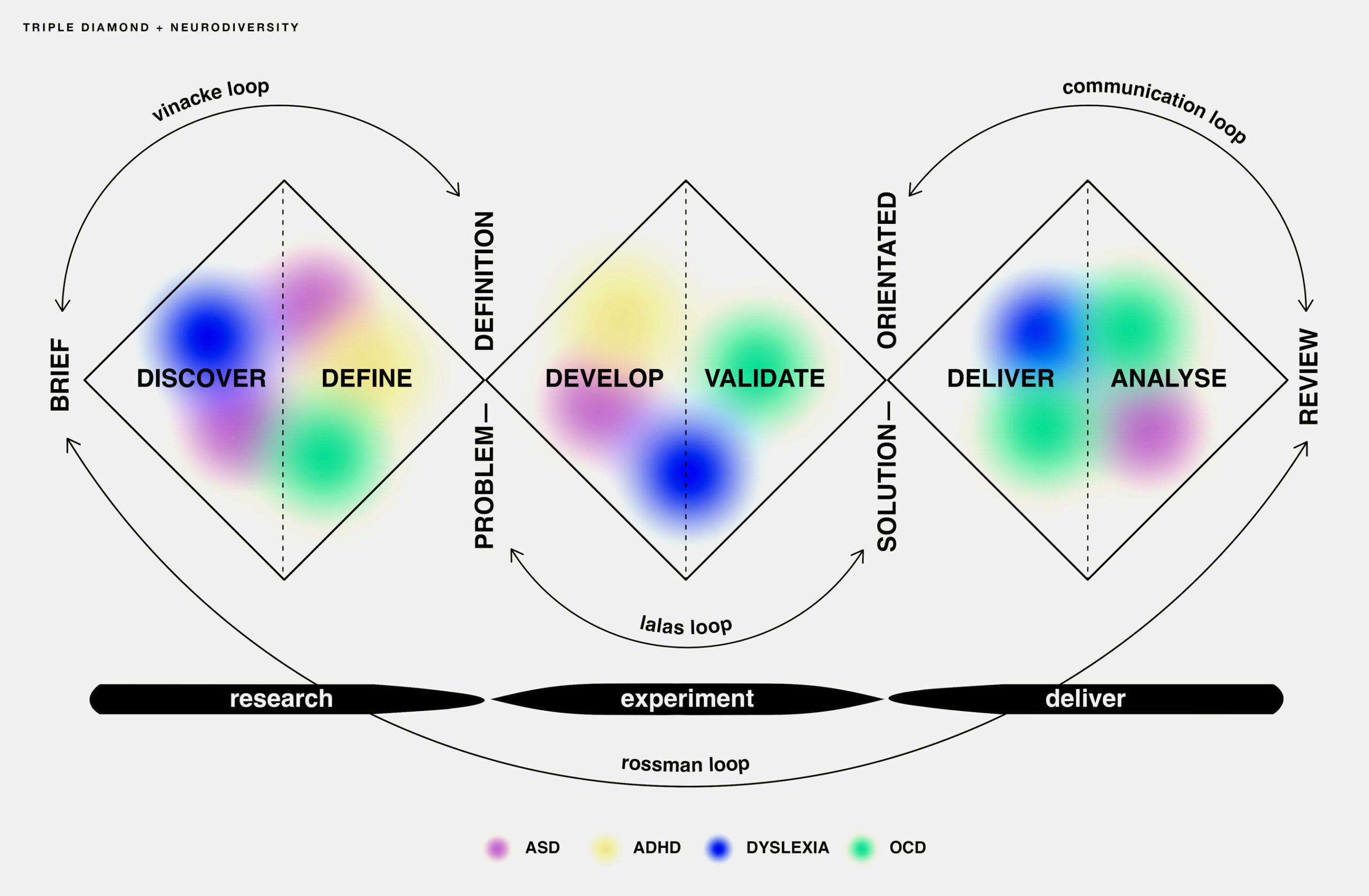#RESEARCH
How do cognitive and perceptual differences of neurodiverse individuals affect creative processes and outputs?
Aim
This exploration delves into the unique ways neurodiverse individuals—those with conditions such as Autism Spectrum Disorder (ASD), Attention Deficit Hyperactivity Disorder (ADHD), Dyslexia and Obsessive Compulsive Disorder (OCD)—approach and execute creative tasks.
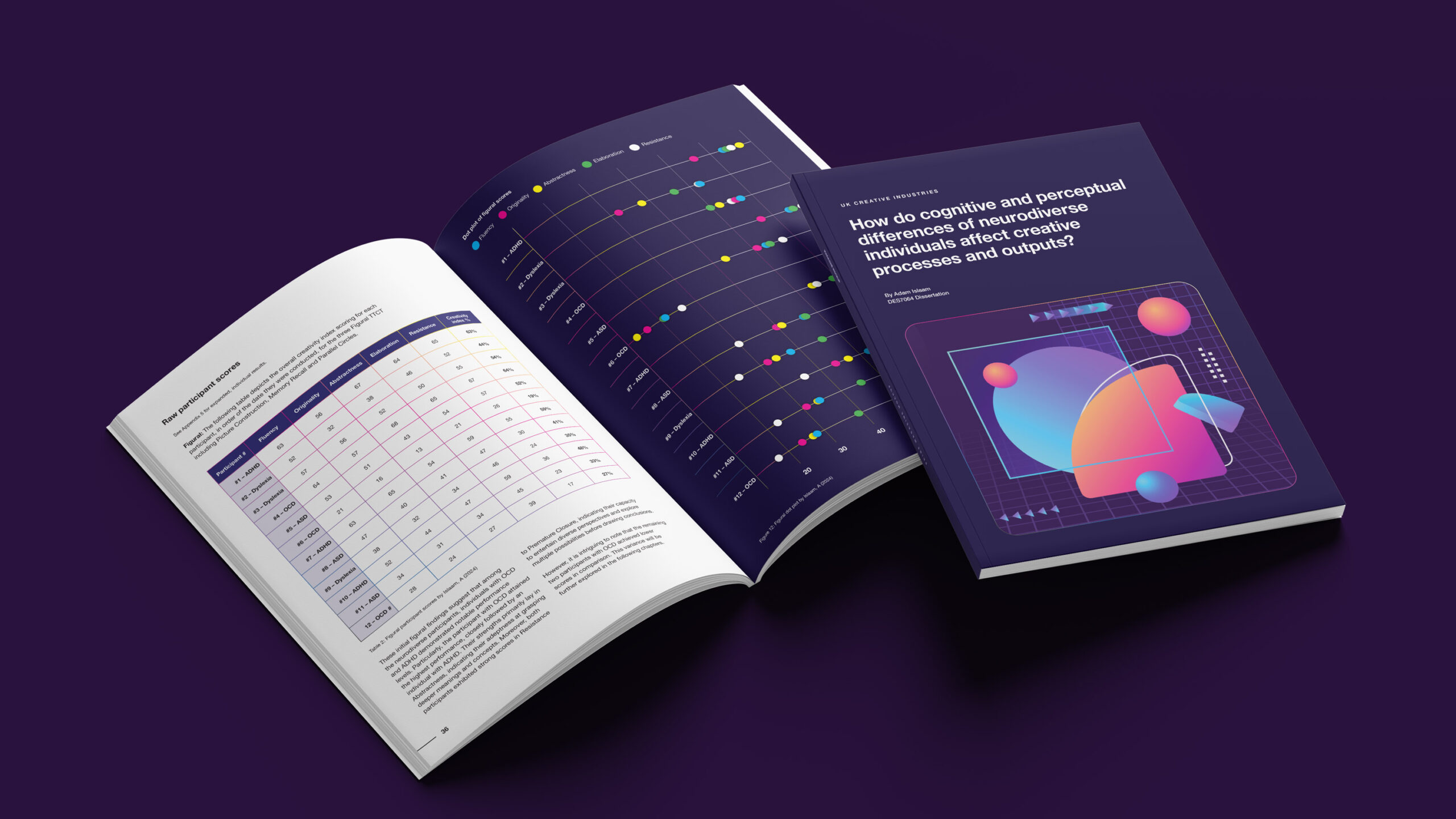
"Neurodiversity is not here to make capitalism more efficient; it’s here to make it more humane.”
– Judy Singer (Harris, 2023)
(01)
ABOUT THE PROJECT
Unlocking Creativity Through Neurodiversity
This project explores how the unique cognitive and perceptual styles of neurodiverse individuals contribute to creativity and innovation. By examining the diverse thinking patterns, problem-solving approaches, and sensitivities associated with neurodivergent conditions, the research highlights the valuable role neurodiversity plays in enhancing creative processes both individually and collaboratively.
Neurodivergent individuals bring fresh perspectives and novel approaches to problem-solving, enriching creative outputs and fostering innovation within teams. However, they also face significant challenges, including barriers to employment, social acceptance, and mental health concerns. This study aims to bridge these gaps by identifying key connections between neurodiverse cognition and creativity, offering insights and recommendations to unlock their full potential in creative and collaborative environments.
(01.1)
SOCIAL MEDIA CAMPAIGN AND WEBSITE
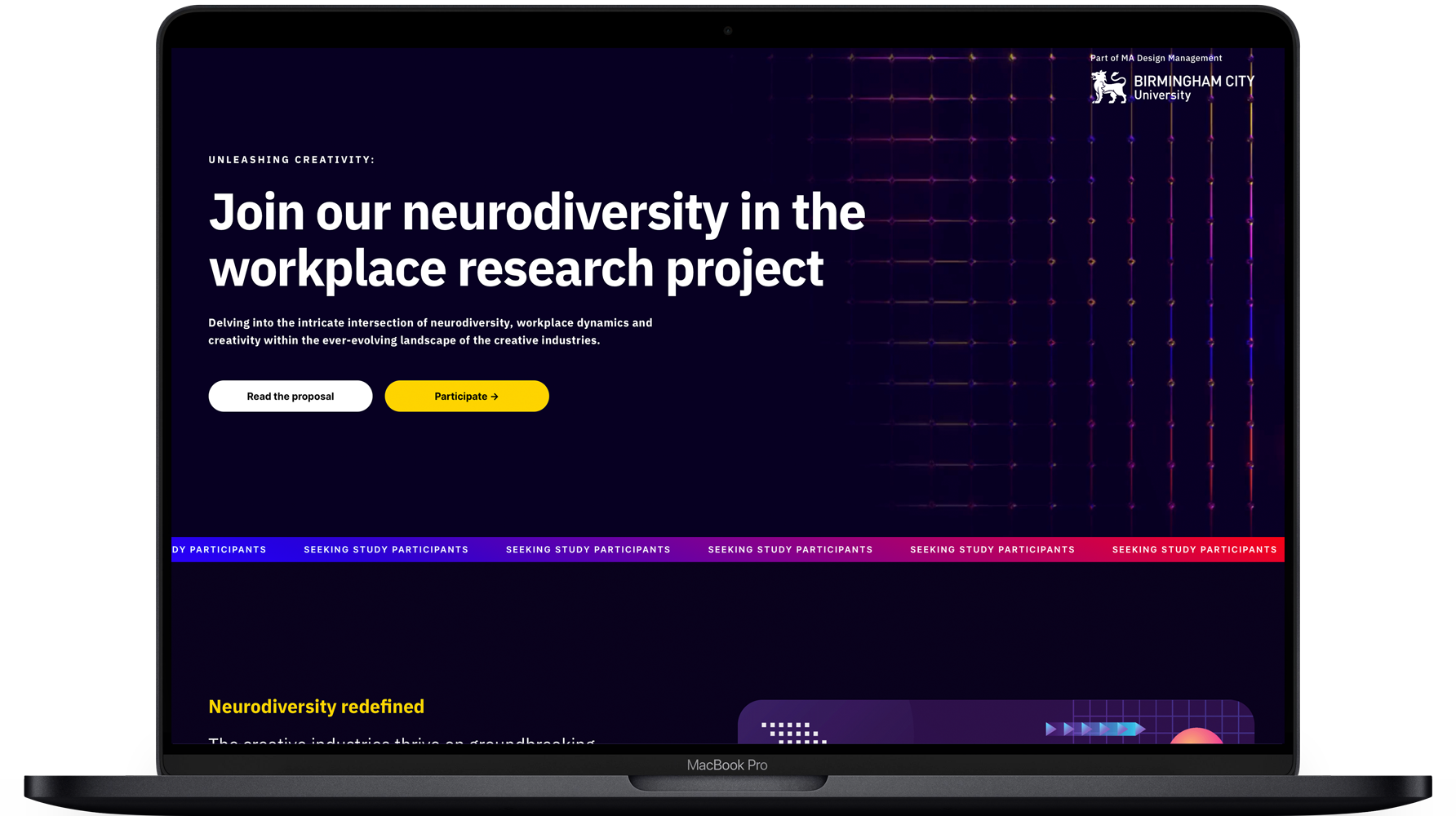
(02)
TASKS CONDUCTED
Observational Tasks
I systematically observed participants interacting with tasks, products, or environments.
- This method helped to:
- Understand Behaviour and Context: Capture natural interactions and identify gaps between intended and actual behaviours.
- Identify Needs: Discover unspoken needs to inform human-centred design solutions.
Torrance Tests of Creative Thinking (TTCT)
To measure creativity, participants completed TTCT tasks, which assessed fluency, originality, and flexibility.
- These tasks were split into:
- Figural: Drawing or constructing creative figures based on prompts.
- Verbal: Generating creative verbal responses, such as suggesting unusual uses for objects.
Structured Interviews
I conducted interviews with a set list of open-ended questions to ensure consistency.
-
This approach allowed me to:
- Standardise Responses: Collect comparable data by asking participants the same questions.
- Enable Replication: The process can be repeated by others for validation or further study.
Focus Groups
I held focus groups with neurodiverse participants to co-design creative solutions.
-
These sessions helped to:
- Validate Assumptions: Confirm findings through direct participant feedback.
- Generate Ideas: Encourage diverse perspectives to spark innovative solutions.
- Refine Designs: Use real-time feedback to improve concepts quickly.
Data Analysis
Multiple methods to triangulate and analyse data:
- Statistical Analysis: Quantified creativity using TTCT results.
- Thematic Analysis: Explored patterns in interview responses.
- Content Analysis: Refined recommendations based on focus group discussions.
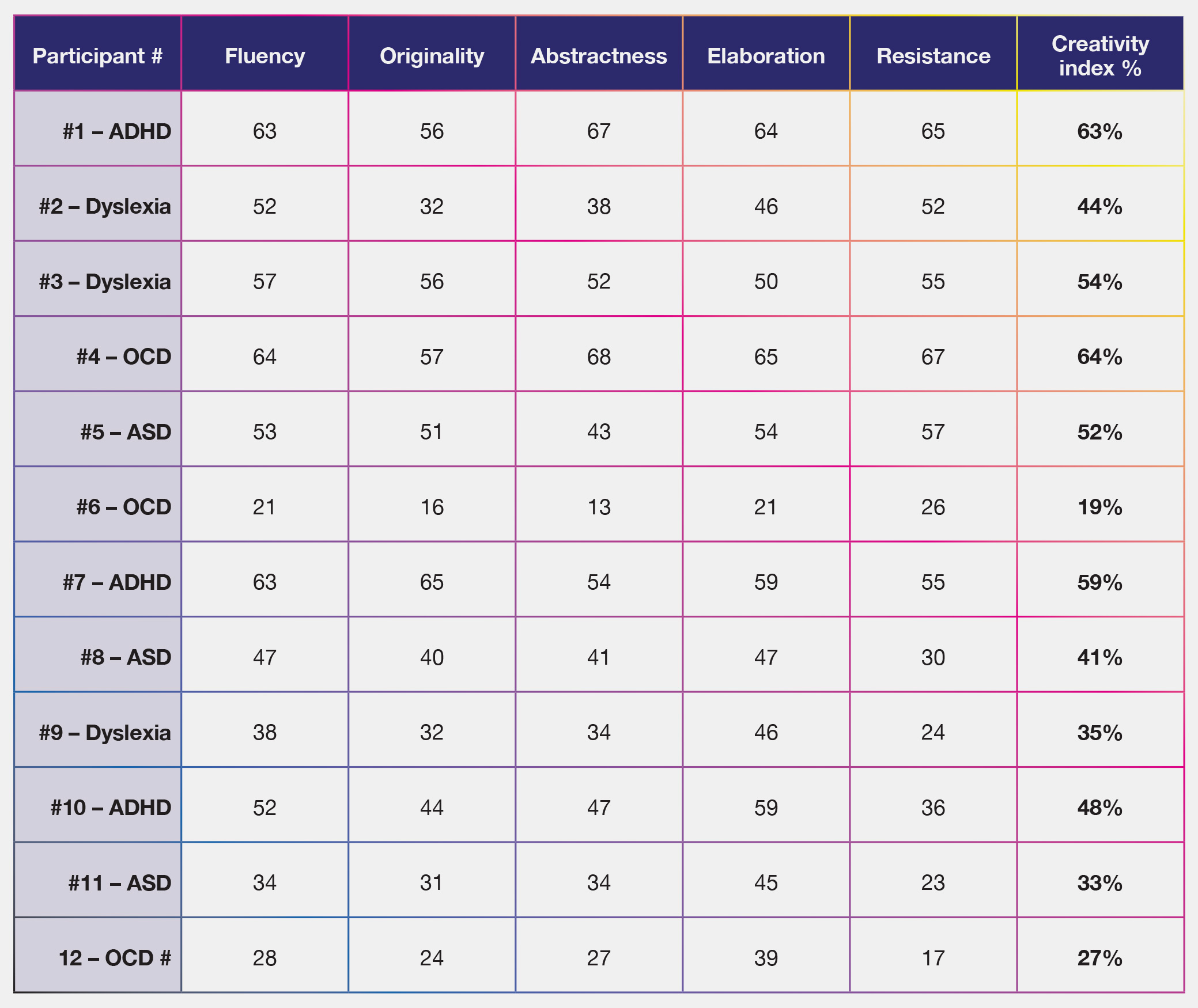
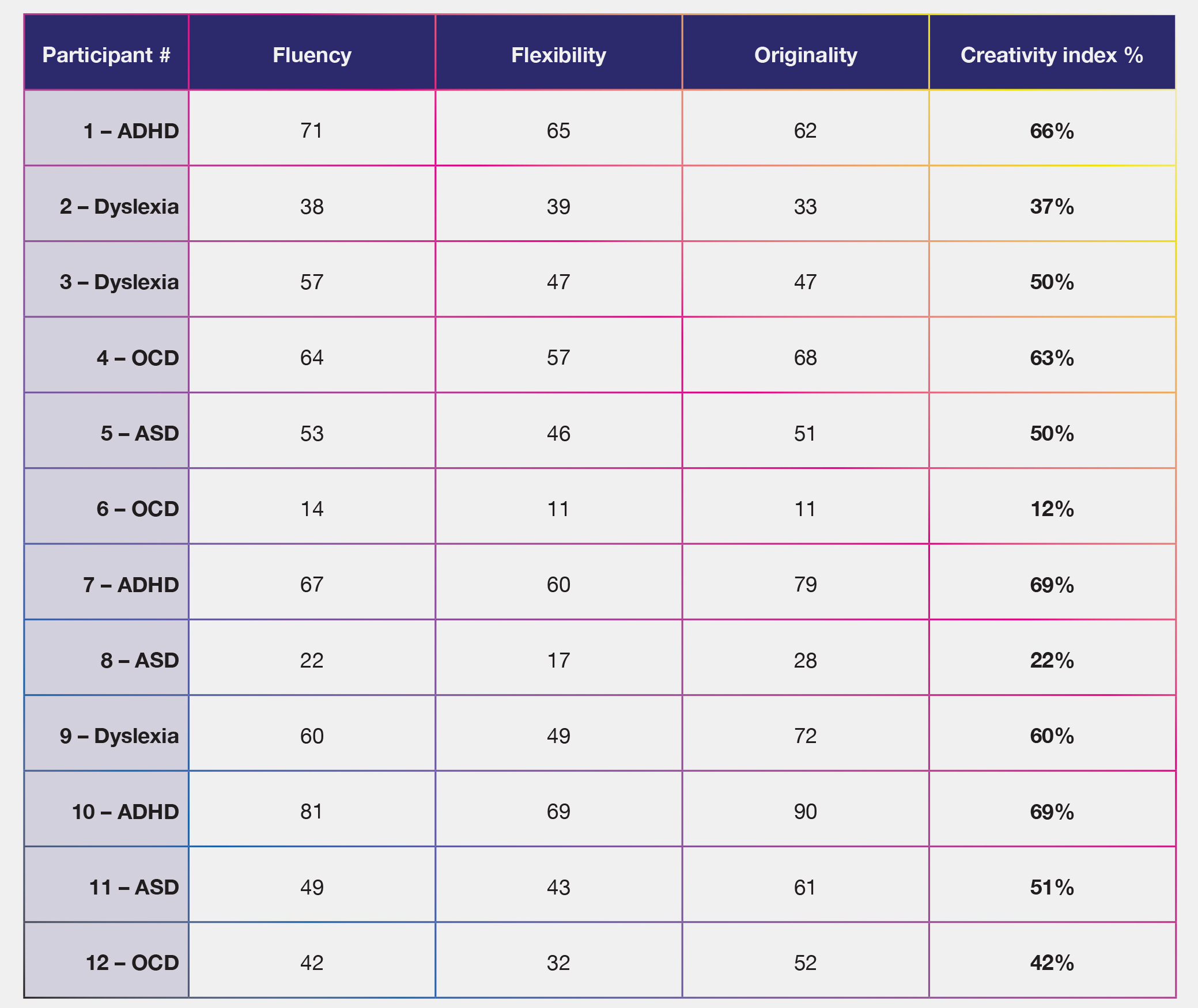
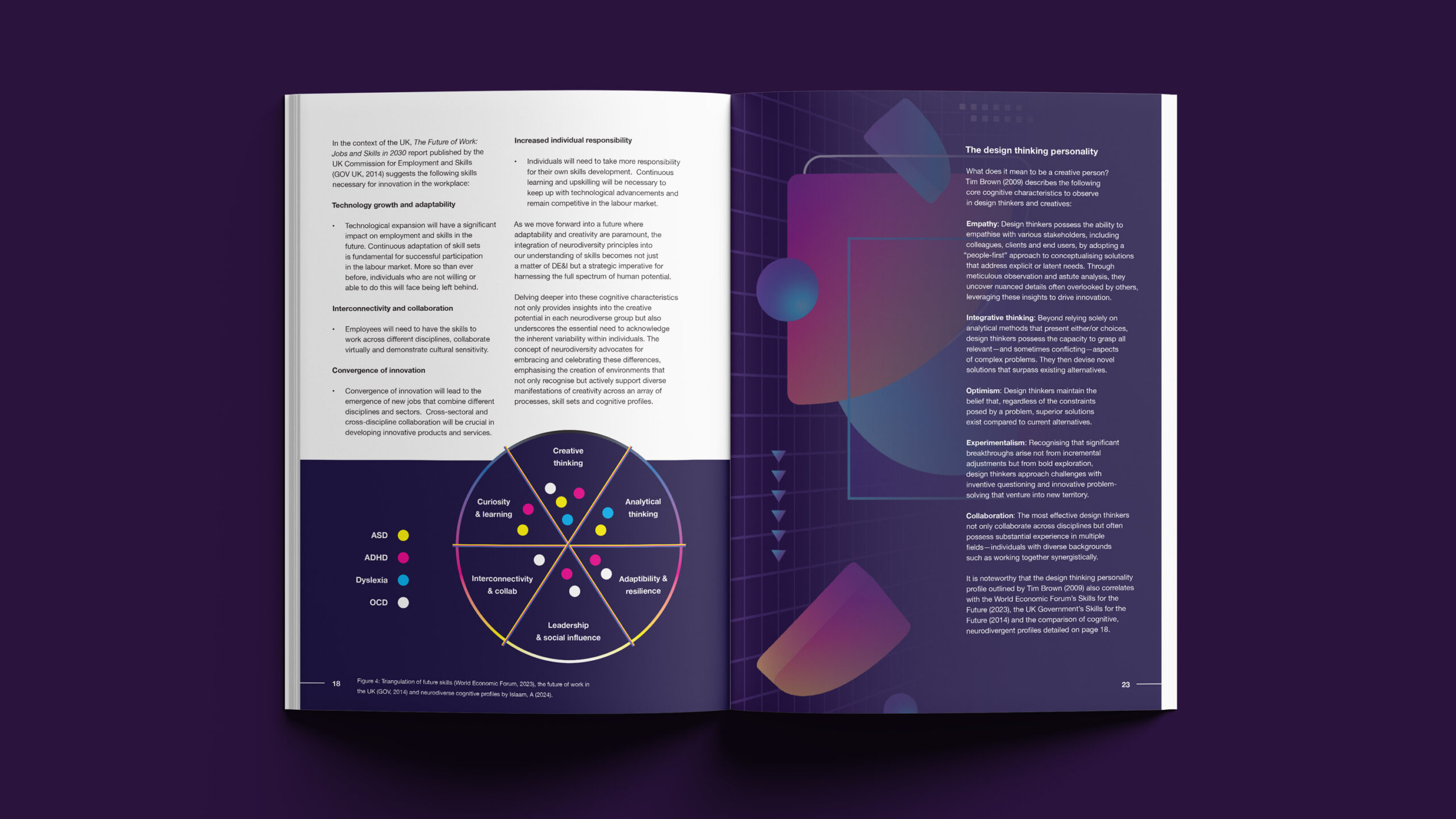
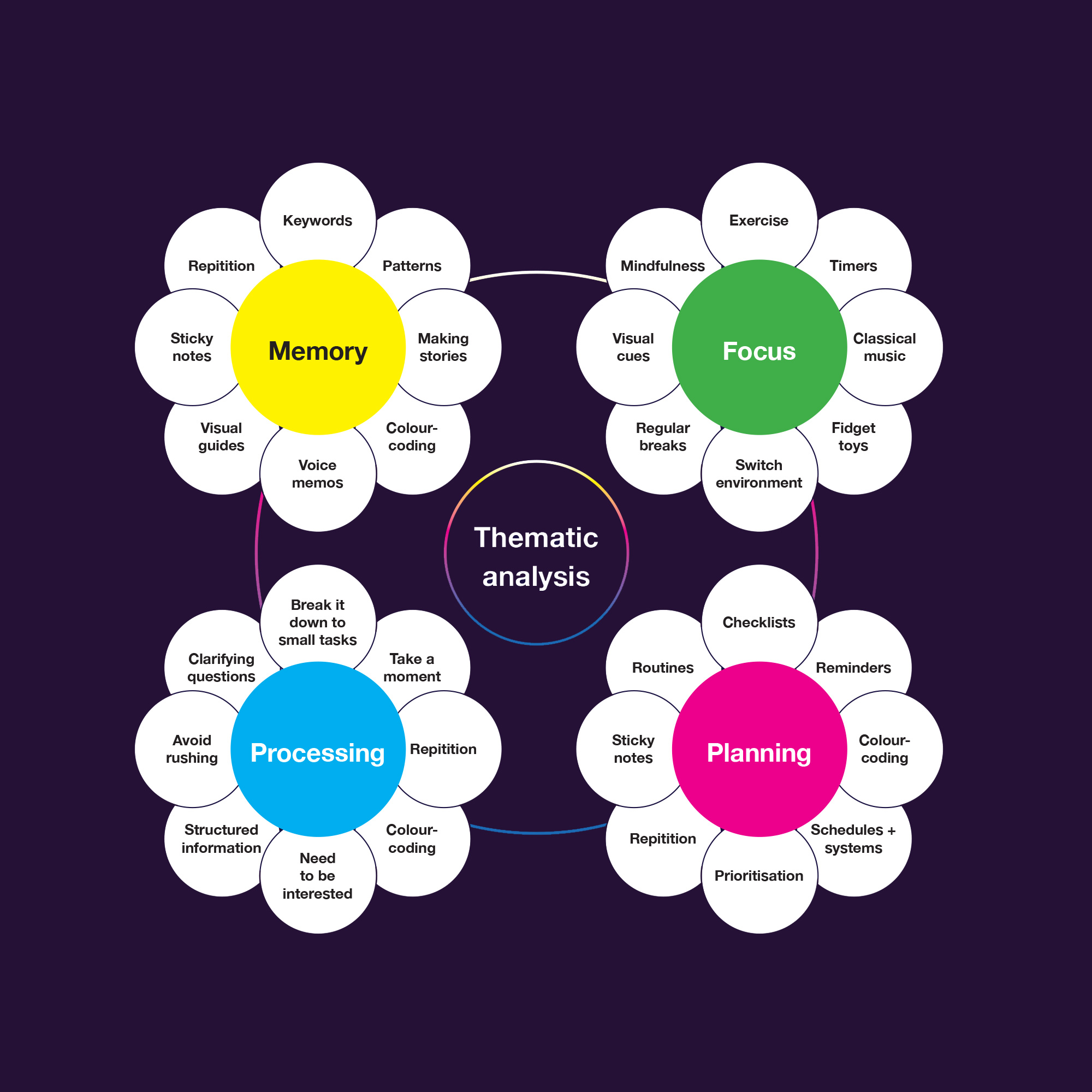
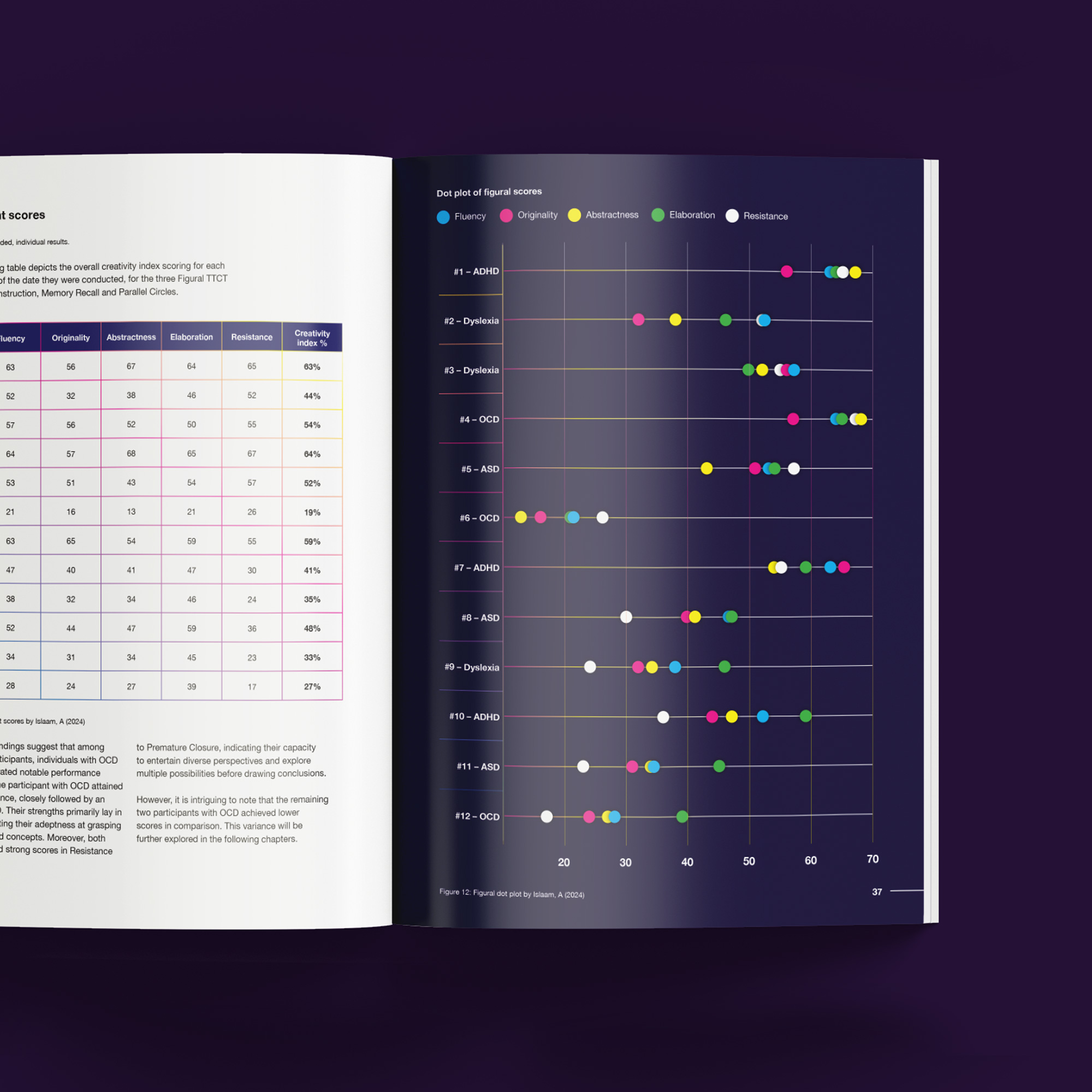
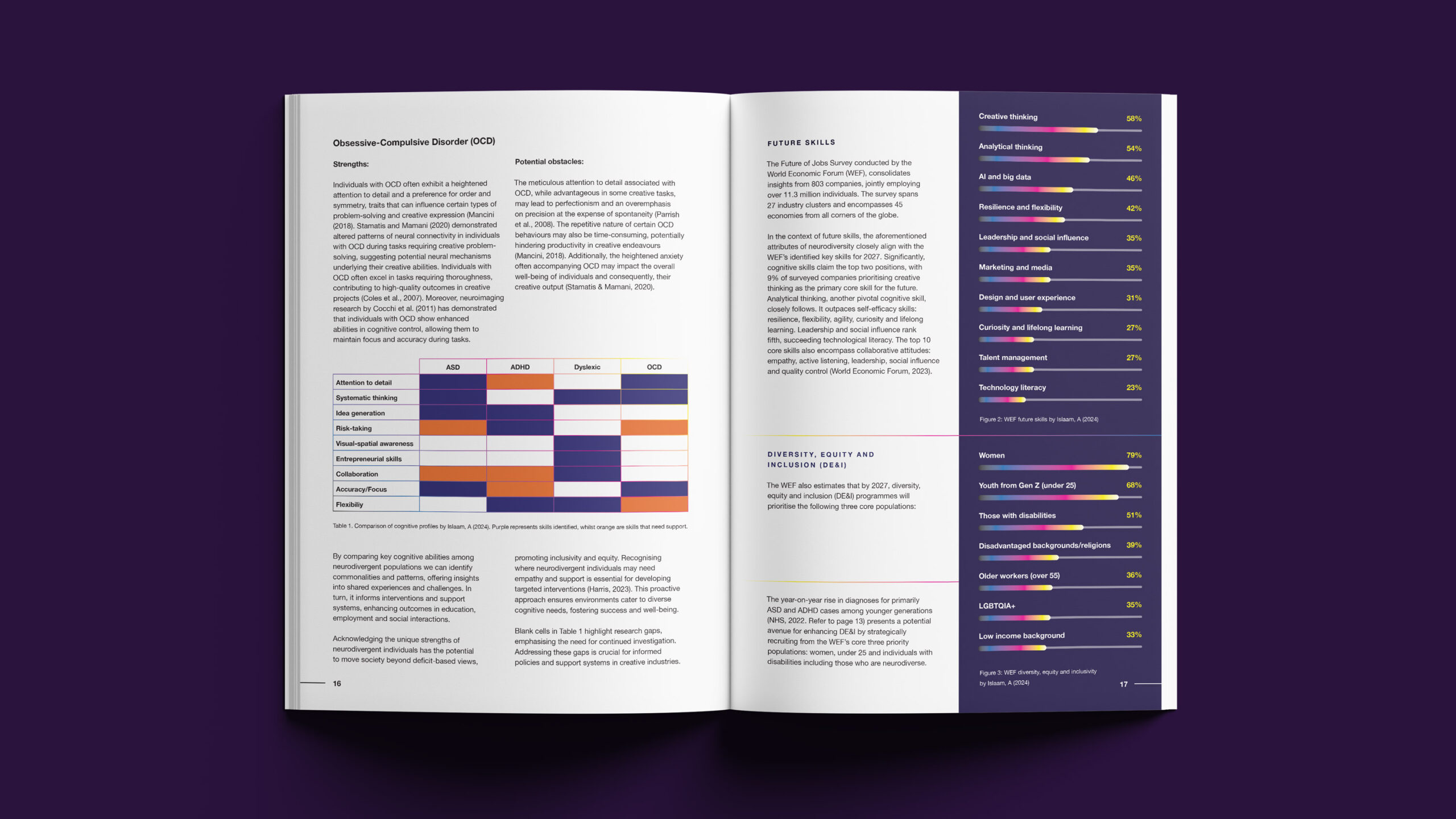
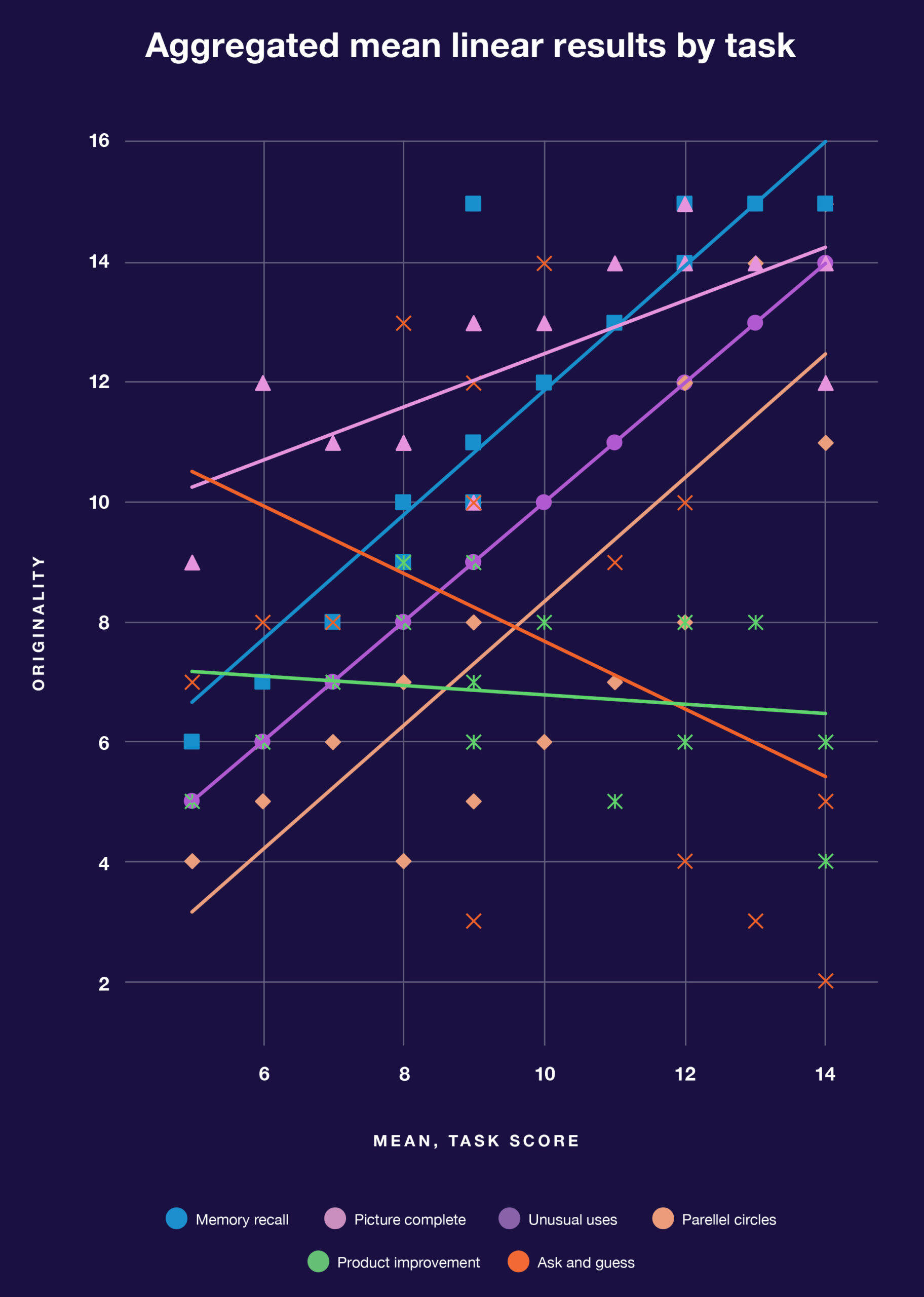
Each neurodivergent condition brings unique creative abilities and obstacles.
Individuals with ASD excel in detailed exploration but may struggle with originality. Those with ADHD thrive in rapid idea generation and flexibility but can find it hard to maintain focus. People with dyslexia often display strong verbal originality and visual-spatial skills, though organising thoughts can be challenging. Meanwhile, individuals with OCD show originality in verbal tasks but may experience rigid thinking that limits flexibility. Understanding these strengths allows tasks to be tailored to maximise creative potential.
(03)
PROCESS
Leveraging neurodiverse strengths in the Triple Diamond Framework
The Triple Diamond framework benefits immensely from the strengths of neurodiverse individuals, including those with ASD, ADHD, dyslexia, and OCD. Each phase of the design process — Discover, Define, Develop, and Deliver — can be enriched by these unique cognitive traits.
In the Discover (Research) phase, individuals with ASD contribute through their attention to detail and strong idea-generation skills, enabling thorough exploration. Those with dyslexia support brainstorming with their verbal idea generation and collaborative abilities. ADHD traits, such as innovative thinking and the ability to subconsciously restructure ideas, help uncover creative approaches during research.
During the Define phase, ASD strengths in systematic thinking help organise and analyse data with precision. ADHD individuals offer a wide range of ideas, helping to explore all possibilities before narrowing down the core problem. OCD traits, like attention to detail, support meticulous problem definition, ensuring clarity and accuracy.
In the Develop (Experiment) phase, creativity and collaboration are key. ASD individuals excel at developing and refining ideas in depth. ADHD strengths in risk-taking and flexibility are valuable for iterating designs based on feedback. Dyslexia fosters collaboration and visual-spatial awareness, enhancing teamwork and envisioning practical solutions. Meanwhile, OCD traits aid in systematically validating solutions.
The Deliver (Validate and Analyse) phase benefits from the adaptability and entrepreneurial skills of individuals with dyslexia, which help manage project complexities. OCD traits ensure precision and adherence to standards, while ASD strengths in focus and accuracy ensure the final product aligns with user needs.
By harnessing these neurodiverse traits, each phase of the Triple Diamond framework can lead to more innovative, inclusive, and effective design outcomes.
